Enjoy erupting apple science for awesome fall science activities for kids! After our pumpkin volcano was a big hit, we wanted to try an APPLE-CANO or apple volcano too! Share this simple chemical reaction that the kiddos will love to try over and over again. Fall is an excellent time of the year to put a little twist on classic science experiments!
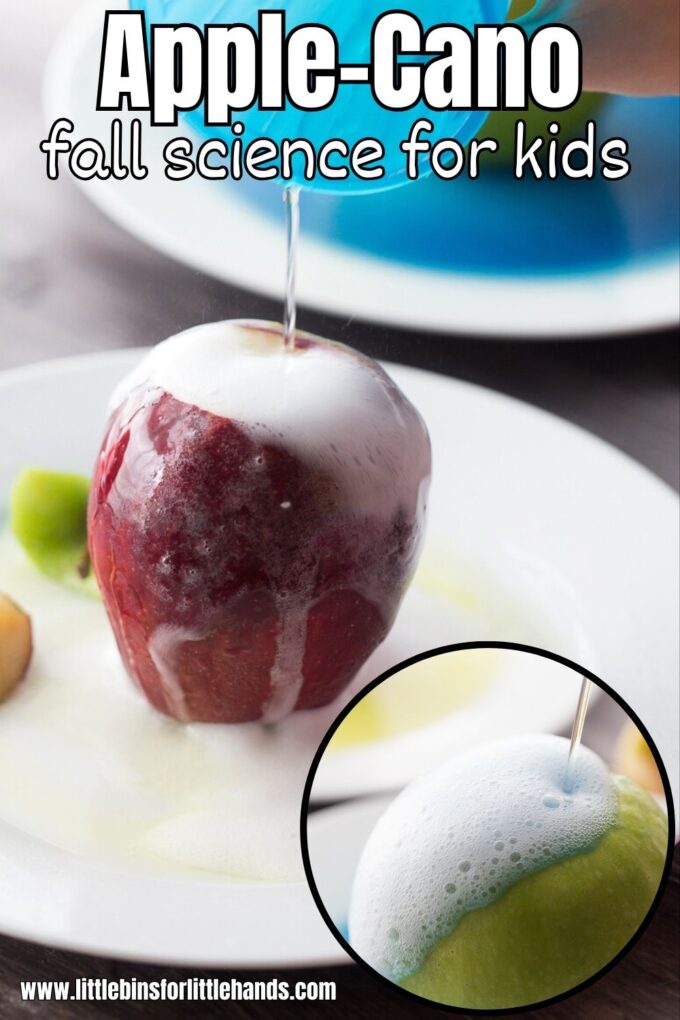
Explore Apple Science For Fall
Our erupting apple science activity is an awesome example of a chemical reaction, and kids will love this amazing chemistry experiment just as much as adults! All you need to use are baking soda and vinegar for a fizzing chemical reaction!
We have a whole season of fun apple science experiments for you to try! Doing experiments in different ways really helps to solidify understanding of the concepts being presented.
You can easily pair this apple volcano experiment with our parts of an apple activity too and a fun apple theme book or two.
Did you know you can also do this volcano experiment with mini pumpkins for Halloween or Thanksgiving?
TIP: You could also try lemon juice or apple cider vinegar for this volcano experiment and compare the results! Check out our lemon volcano!
Using The Scientific Method With Kids
The scientific method is a process or method of research. A problem is identified, information about the problem is gathered, a hypothesis or question is formulated from the information, and the hypothesis is tested with an experiment to prove or disprove its validity.
Sounds heavy! What in the world does that mean?!? It means you don’t need to try and solve the world’s biggest science questions! The scientific method is all about studying and learning things right around you.
As children develop practices that involve creating, gathering data evaluating, analyzing, and communicating, they can apply these critical thinking skills to any situation.
READ MORE: The Scientific Method For Kids With Examples
Note: The use of the best Science and Engineering Practices is also relevant to the topic of using the scientific method. Read more and see if it fits your science planning needs.
Helpful Science Resources To Get Your Started
Here are a few resources that will help you introduce science more effectively to your kiddos or students and feel confident yourself when presenting materials. You’ll find helpful free printables throughout.
- Best Science Practices (as it relates to the scientific method)
- Variables In Science
- Observation In Science
- Science Vocabulary
- 8 Science Books for Kids
- All About Scientists
- DIY Science Kits
- Science Tools for Kids
Get your FREE printable Apple STEM activities guide!
Apple Volcano Experiment
Grab your apples! You can check out different color apples too. In fact, if you don’t want to waste food, grab some bad apples and give it ago. The first time we did this we took a couple of apples from the orchard that were going to be thrown out anyway.
Supplies:
- Apples
- Baking Soda
- Vinegar
- Container to catch the fizz
- Knife to carve out a hole (for adults to do!)
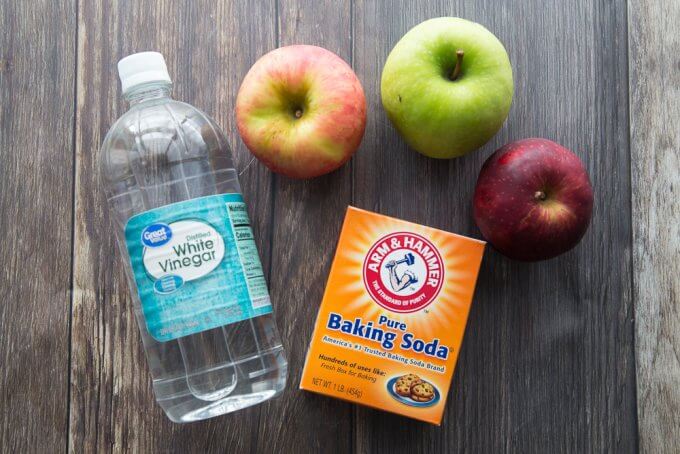
How To Set Up An Apple Volcano
STEP 1. Put your apple on a dish, pie plate, or tray to catch the runoff.
NOTE: An adult should use a knife to cut a hole or vessel in the top of the apple about halfway down.

STEP 2. You can then have the kiddos put a couple of spoons of baking soda into the hole.
Hint: Add a drop of dish soap if you want a foamier eruption! The chemical eruption will produce more bubbles with the added dish soap and create more runoff too!
STEP 3. Add a few drops of food coloring if you want. Mix it up and pair different colors with different apples.
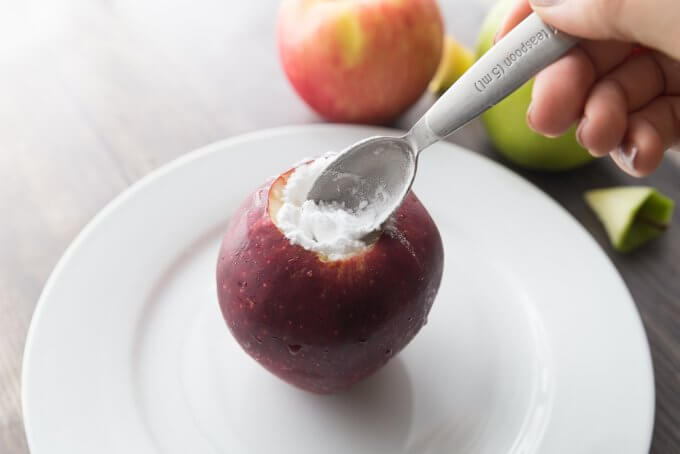
STEP 4. You will want to pour your vinegar into an easy to use cup for the kiddos. Additionally, you can provide them with eye droppers or turkey basters for extra fun.
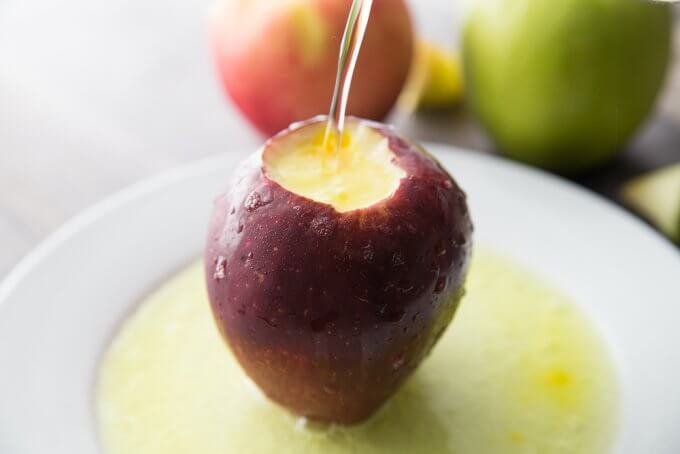
Pouring straight from a cup into the apple will produce a more dramatic volcano effect. While using a baster or eyedropper will have a smaller eruption. However, your kids will also have a blast exploring with these science tools.
Check out fizzing red and green apples with all sorts of colors!

The Science Behind The Apple Volcano
A chemical reaction occurs between two or more substances that change and form a new substance. In this case, you have an acid, vinegar and a base, baking soda. When they combine, they make a gas called carbon dioxide which produces the eruption you can see.
The carbon dioxide escapes the mixture in the form of bubbles. You can even hear them if you listen closely. The bubbles are heavier than air, so the carbon dioxide collects at the surface of the apple or overflows the apple because of the small vessel we have given it.
In this baking soda volcano, the dish soap is added to collect the gas and form bubbles that give it a more robust lava like flow down the side! That equals more fun!
You don’t have to add dish soap but it’s worth it. You can even set up an experiment to see which eruption you like more, with dish soap or without.
You can also experiment with a variety of containers to find your perfect volcano vessel or create a more traditional one. We have enjoyed a variety of volcano projects with different fruits as well as a LEGO volcano and an easy sandbox volcano.
Read more about the science behind baking soda and vinegar experiments.

More Fun Apple Experiments To Try
- Apple Races for Simple Fall Physics
- Why Do Apples Turn Brown?
- Balancing Apples (FREE PRINTABLE)
- Red Apple Slime
- 5 Senses Apple Taste Test
Printable Preschool Apple Pack
Perfect for 3-to 6-year-olds in a preschool classroom, learning center, or home. Easy to set up and use with one kiddo or a classroom. This themed pack includes a book and supply list to help you easily set up the 12+ activities.
Tip: Grab the Preschool Themes Growing Bundle and save money!
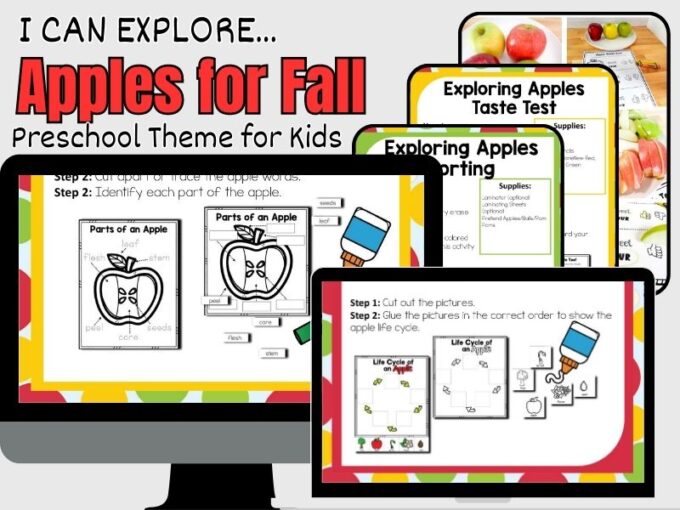
Printable Science Projects For Kids
If you’re looking to grab all of our printable science projects in one convenient place plus exclusive worksheets and bonuses like a STEAM Project pack, our Science Project Pack is what you need! Over 300+ Pages!
- 90+ classic science activities with journal pages, supply lists, set up and process, and science information. NEW! Activity-specific observation pages!
- Best science practices posters and our original science method process folders for extra alternatives!
- Be a Collector activities pack introduces kids to the world of making collections through the eyes of a scientist. What will they collect first?
- Know the Words Science vocabulary pack includes flashcards, crosswords, and word searches that illuminate keywords in the experiments!
- My science journal writing prompts explore what it means to be a scientist!!
- Bonus STEAM Project Pack: Art meets science with doable projects!
- Bonus Quick Grab Packs for Biology, Earth Science, Chemistry, and Physics

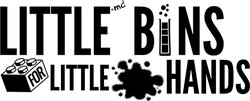

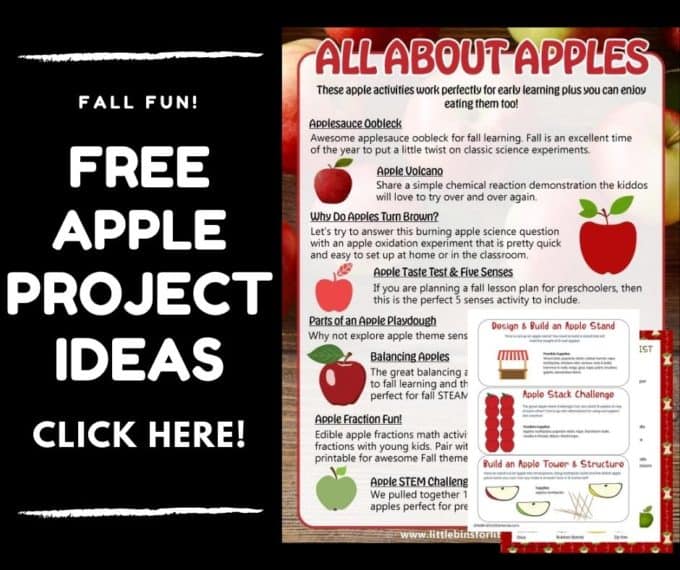
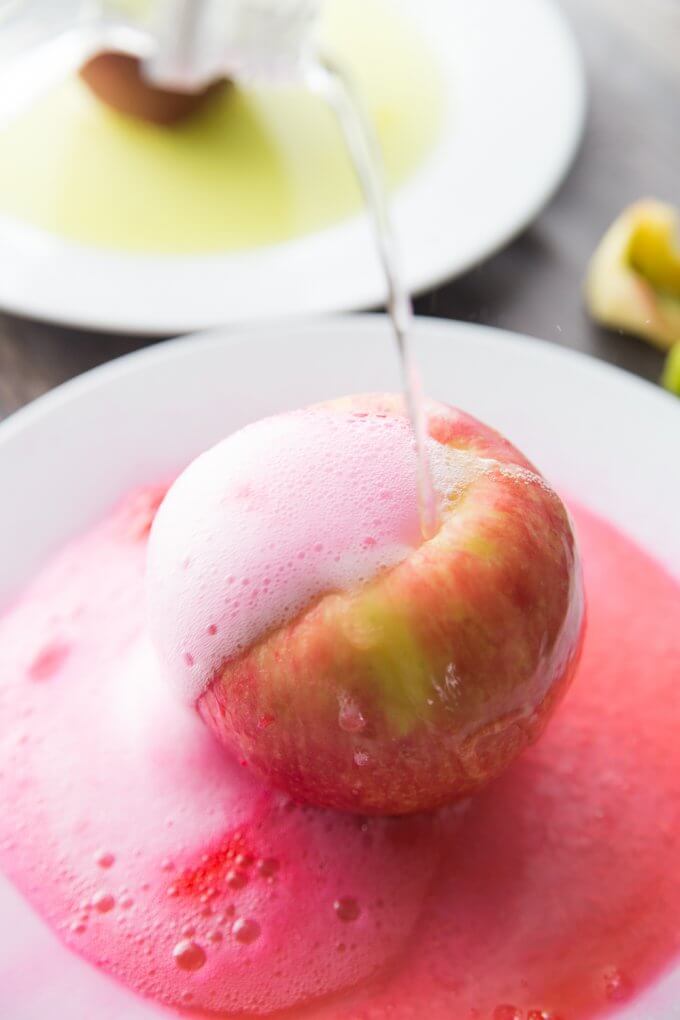
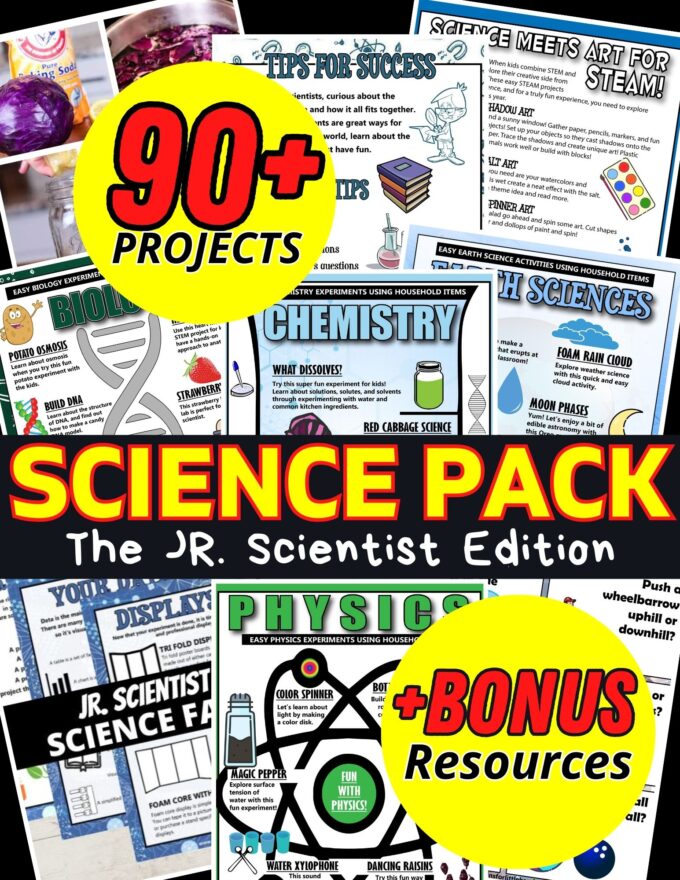
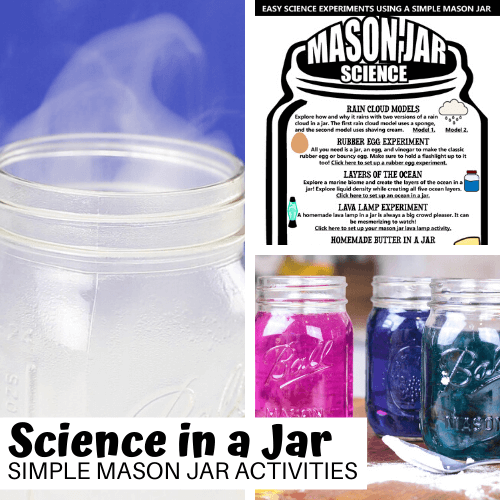
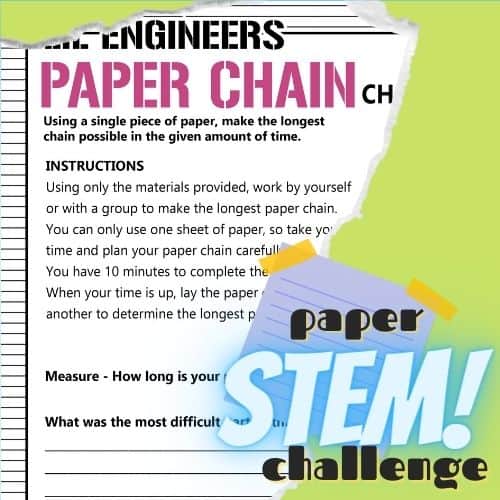
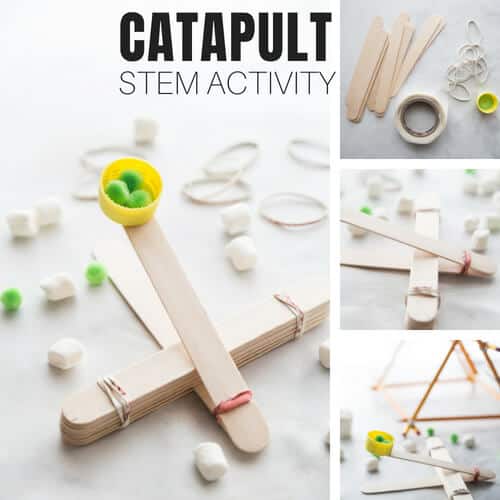
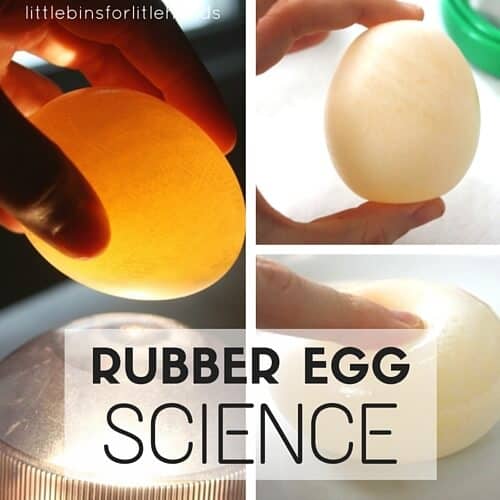
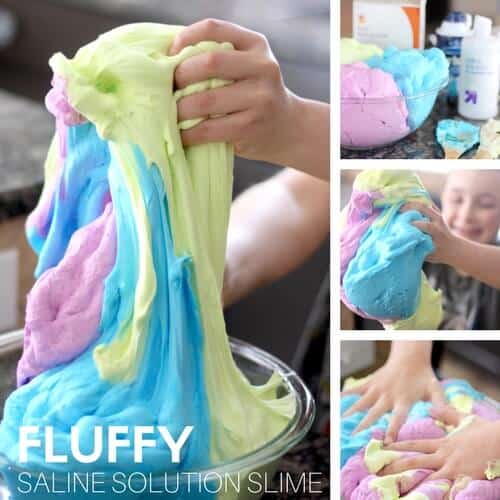
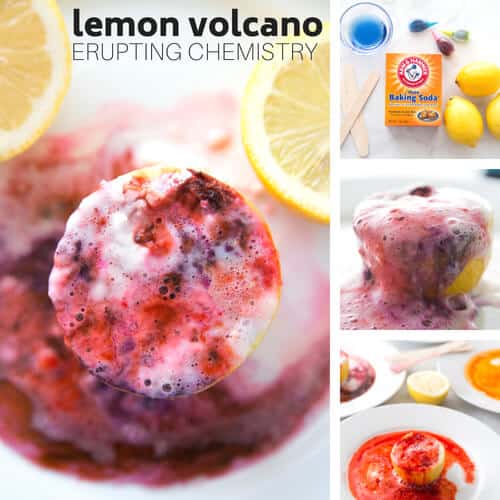
I did this experiment with my daughter’s pre-k class this morning and it was a hit!!! That being said, I did something different; we used two different types of apples, a red delicious and a granny smith. Did the green apple react differently? You betcha! The difference was only a slight one but there was more bubbly from the green apple. Why? We are thinking the difference is due to the different acidic levels/tartness in the apples. =)
Loved this. I used a red pepper and it worked really well. “V” for volcano, vegetable, and vinegar!
Science is fun!!!
This is so cool. We did this five or more times. My three year old was very impressed.
Thank you for these great ideas! I used them in our STEM Collaboratory today with Kindergarten and they went wonderfully well! The kids had fun and showed great grit, brainstorming, testing, and perseverance!
Love to hear that! Make sure you try it with mini pumpkins too!
Thank you for blogging this. I’ve been a long time reader of your blog.
Awesome! Glad to hear that. We always have something new and fun to share.
Love this experiment! I would love to include it in a roundup on my site growingwilddandelions.com . I would like to use one photo and I will credit your site and link back to your original post. If you agree I will also add you to my list for future posts. Please let me know if this is OK!
Thanks!
Please send an email to [email protected]